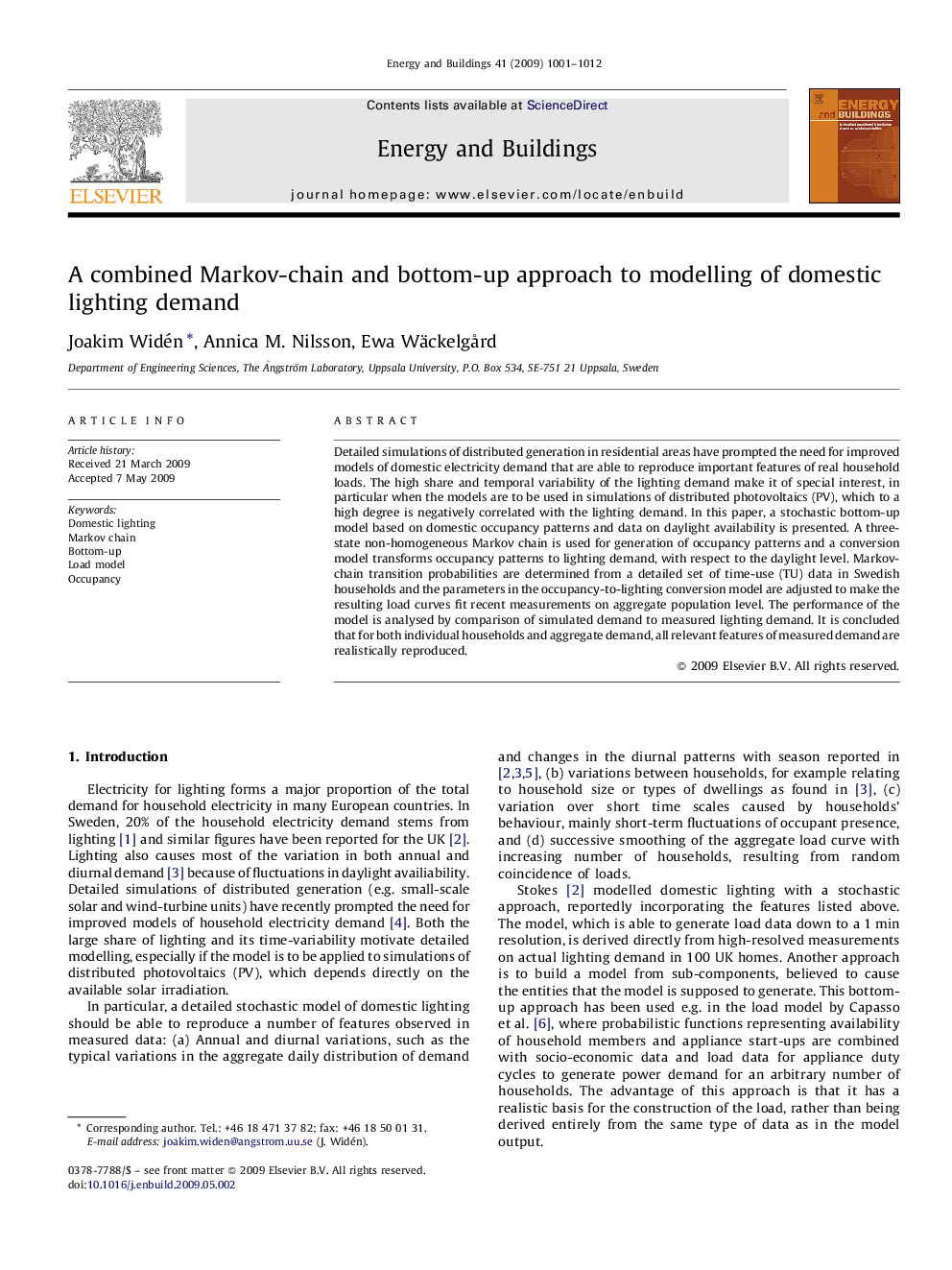| Article ID | Journal | Published Year | Pages | File Type |
|---|---|---|---|---|
| 264803 | Energy and Buildings | 2009 | 12 Pages |
Detailed simulations of distributed generation in residential areas have prompted the need for improved models of domestic electricity demand that are able to reproduce important features of real household loads. The high share and temporal variability of the lighting demand make it of special interest, in particular when the models are to be used in simulations of distributed photovoltaics (PV), which to a high degree is negatively correlated with the lighting demand. In this paper, a stochastic bottom-up model based on domestic occupancy patterns and data on daylight availability is presented. A three-state non-homogeneous Markov chain is used for generation of occupancy patterns and a conversion model transforms occupancy patterns to lighting demand, with respect to the daylight level. Markov-chain transition probabilities are determined from a detailed set of time-use (TU) data in Swedish households and the parameters in the occupancy-to-lighting conversion model are adjusted to make the resulting load curves fit recent measurements on aggregate population level. The performance of the model is analysed by comparison of simulated demand to measured lighting demand. It is concluded that for both individual households and aggregate demand, all relevant features of measured demand are realistically reproduced.
